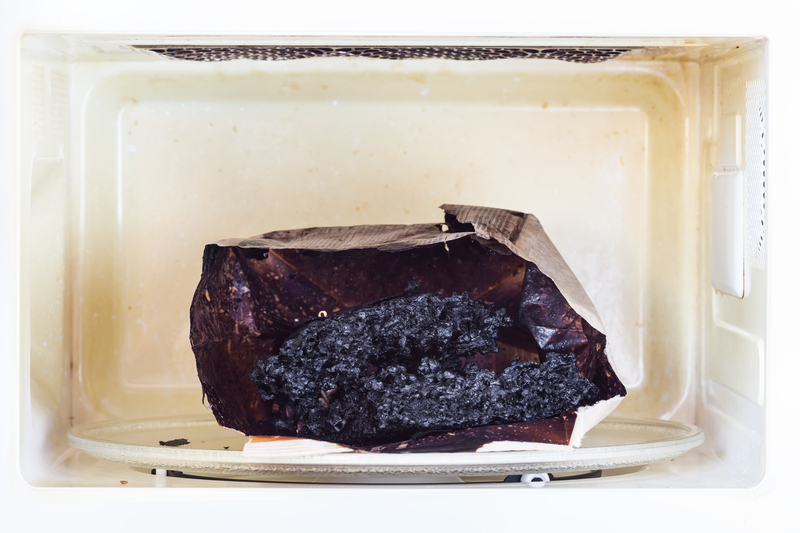Expert strategies to keep bathroom mold at bay
Posted on 08/09/2025
Expert Strategies to Keep Bathroom Mold at Bay
If you've ever discovered unsightly black or green patches clinging to your bathroom tiles, you know the frustration of battling mold. Bathroom mold is not only unpleasant to look at, but it can also pose serious health risks and cause gradual damage to your home. Fortunately, with advanced knowledge and a few prevention methods, you can keep bathroom mold at bay for good.

Understanding the Causes of Bathroom Mold
Mold thrives in environments that are moist, warm, and poorly ventilated. Bathrooms, being regularly exposed to water and frequent humidity, offer the perfect breeding ground for mold spores to settle and grow. Common culprits that lead to persistent bathroom mold include:
- Inadequate ventilation (no exhaust fans or regularly closed windows)
- Water leaks from pipes or fixtures
- Poor cleaning habits
- Lingering wet towels and damp shower curtains
- Cracks or deteriorated grout and caulk
Understanding these triggers is the first step toward employing expert strategies to prevent and eliminate mold in your bathroom.
Comprehensive Mold Prevention Tips from Experts
1. Improve Bathroom Ventilation
One of the most effective ways to keep bathroom mold at bay is ensuring your bathroom remains as dry as possible. Experts recommend:
- Installing or upgrading an exhaust fan: Choose a fan rated for your bathroom's square footage and run it during and at least 20 minutes after showers.
- Opening windows regularly: When weather permits, let fresh air flow to decrease moisture buildup.
- Propping open doors: Leave the bathroom door slightly ajar to allow air circulation.
Better ventilation helps reduce humidity levels--the number one enemy in the fight against bathroom mold.
2. Promptly Repair Leaks and Drips
Unattended leaks under sinks, around toilets, or from showerheads and faucet fixtures can create persistent moisture sources, supporting the growth of mold. Follow these expert steps to ensure leaks are handled quickly:
- Inspect pipes, faucets, and toilet bases regularly for any signs of moisture or water stains.
- Replace worn washers and seals.
- Permanently caulk and seal around tubs, sinks, and shower enclosures to prevent water ingress.
- Address any wall or ceiling discoloration promptly, as this may signify a hidden leak.
Quick fixes today can prevent mold outbreaks tomorrow.
3. Use Mold-Resistant Materials and Paints
Building or renovating your bathroom? Opt for mold-resistant drywall, backer board, and paints. Here's how this expert strategy helps:
- Install water-resistant drywall (often called "greenboard") behind tiles and around showers.
- Apply mold-inhibiting primers and paints on the ceiling and walls, which contain additives to block mold growth even in humid conditions.
- Seal grout lines with a dedicated grout sealer every few years.
Using these materials drastically reduces the likelihood of bathroom mold appearing and spreading.
4. Implement Regular Deep Cleaning Routines
Routine cleaning is a critical, expert-recommended mold prevention method. Soap scum, skin oils, and hard water deposits all feed mold, creating the right environment for spores to grow. Include these steps in your weekly cleaning routine:
- Scrub tiles, grout, and caulk lines with a solution of equal parts vinegar and water, or hydrogen peroxide for stubborn spots.
- Wipe down all surfaces (counters, sinks, mirrors, tub, and shower walls) after each use to remove lingering moisture.
- Wash or replace shower curtains and liners at least once per month, and spread them out to dry after showering.
- Launder bath mats and towels frequently and hang to dry after use.
Meticulous cleaning not only eliminates existing mold spores, it also removes the organic debris mold needs for growth.
5. Control Bathroom Humidity
High humidity is the primary factor that encourages bathroom mold formation. Experts recommend keeping indoor humidity levels below 50% for optimal mold prevention. To do this:
- Use a digital hygrometer to monitor bathroom humidity, especially if you live in a humid climate.
- Install a dehumidifier in the bathroom or in adjacent rooms if necessary.
- Ensure your HVAC vents are open and functioning to facilitate air movement.
- Keep containers (like shampoo bottles or soap dishes) dry; empty and clean them regularly.
Managing humidity is a proven technique to keep bathroom mold at bay.
6. Seal and Maintain Grout and Caulk
Crumbling, cracked, or unsealed grout and caulk are prime locations for mold to take hold. Employ these expert tactics to keep your bathroom surfaces safe:
- Inspect grout lines and caulk at least twice per year for signs of wear or gaps.
- Clean, dry, and re-apply grout sealer annually for extra protection.
- Remove and re-caulk any cracked or mildewed lines around tubs, showers, and sinks.
Proper maintenance creates an inhospitable environment for mold and prevents moisture from seeping into walls and floors.
7. Adopt Smart Storage Habits
Cluttered bathrooms trap moisture and hinder cleaning, making them more likely to host mold. Experts suggest:
- Storing personal care items in closed cabinets or on open shelving that allows for good air flow.
- Using moisture-proof containers for storing cleaning products.
- Keeping toothbrush holders, soap dishes, and decorative items dry and washed.
Reducing clutter also makes it easier to spot and address mold early, keeping your bathroom mold-free.
Professional Help: When to Call Experts for Mold Remediation
Most homeowners can contain and prevent small outbreaks of bathroom mold using at-home strategies. However, for recurring, widespread, or persistent mold (especially inside walls, under floors, or in ceilings), the advice is clear: call mold remediation professionals.
Certified mold inspectors can:
- Identify hidden sources of moisture contributing to mold growth.
- Safely remove advanced mold without exposing your family to spores.
- Use specialized equipment and fungicides to ensure all traces of mold are eradicated.
- Recommend the best strategies to keep bathroom mold at bay in the future.
Hiring experts ensures your home remains healthy, safe, and free from damaging mold.
Natural Mold Removal Solutions for DIY Enthusiasts
If small spots of mold do occur, experts recommend these proven, eco-friendly bathroom mold removal solutions:
- White Vinegar: Pour undiluted white vinegar into a spray bottle, spritz over moldy areas, let sit for one hour, then scrub and rinse.
- Baking Soda: Mix 1/4 tablespoon baking soda with water, apply paste to stubborn mildew in grout and tile, and scrub with a stiff brush.
- Hydrogen Peroxide: Use 3% hydrogen peroxide directly on mold spots, let bubble for 10 minutes before wiping clean.
- Tea Tree Oil: Add one teaspoon to a cup of water, spray, and leave on mold affected areas as a natural fungicide.
Always wear gloves, goggles, and a mask when cleaning mold to avoid inhaling spores or irritating your skin.
Innovative Expert Tools for Bathroom Mold Prevention
Advanced products to keep bathroom mold at bay are more accessible than ever. Consider investing in these expert-recommended items:
- Smart Dehumidifiers: Compact models specifically designed for bathrooms maintain optimal moisture levels automatically.
- UV-C Bathroom Lights: These lights kill mold spores and bacteria with safe ultraviolet waves--perfect for overnight use in bathrooms prone to mold.
- Surface Mildew Blockers: These silicone-based sprays form a micro-thin, invisible barrier that inhibits mold before it can grow on tiles and grout.
- Moisture Meter: Detects hidden dampness in walls, floors, and ceilings, helping you address issues before mold appears.
Utilizing the latest technology can make the task of maintaining a mold-free bathroom even easier and more efficient.

The Importance of Preventive Maintenance
Bathroom mold prevention is an ongoing commitment. Routine maintenance is the backbone of keeping mold out for good. Make these tasks part of your home care checklist:
- Test ventilation fans and clear blockages from air ducts every 3-6 months.
- Inspect under sinks, behind toilets, and around bathtubs for leaks or condensation.
- Refresh grout sealer and replace caulking as soon as signs of failure appear.
- Declutter, deep clean, and allow all fabrics to dry fully after use.
Staying ahead of these routine details is the single best strategy to guard against future mold outbreaks.
The Last Word: Transform Your Bathroom into a Mold-Free Oasis
Mold prevention, when tackled with proven expert strategies, need not feel overwhelming. From improving ventilation and controlling humidity to using advanced materials and performing regular upkeep, each tip supports a cleaner, safer, and healthier bathroom environment.
The time and effort invested now in learning how to keep bathroom mold at bay will save you hassle, health concerns, and costly repairs in the future. Stay proactive, stay alert, and enjoy your beautifully clean, mold-free bathroom every day!
- Keep your bathroom dry, ventilated, and well maintained.
- Embrace a consistent cleaning schedule and resolve issues immediately.
- Invest in smart tools and materials designed to resist mold.
- If mold gets out of hand, don't hesitate to call a professional for help.
With these expert tips, you can confidently keep bathroom mold at bay and ensure a hygienic, inviting space for you and your family.



